Top 7 Tips On How To Maintain An Algae Free Pond
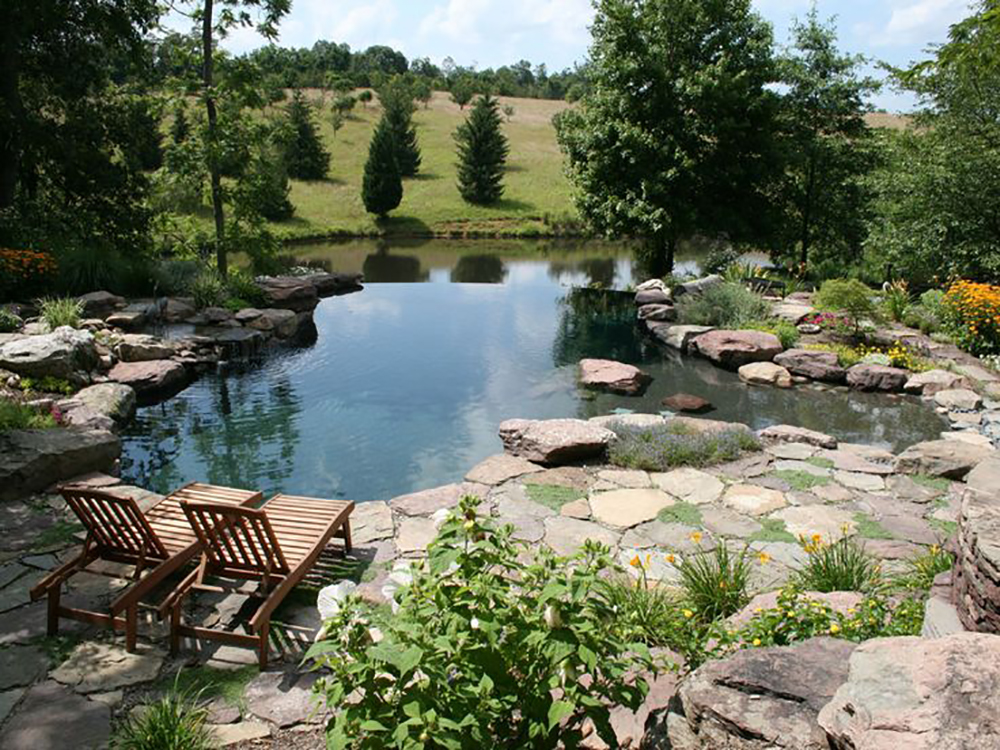
By Terry Mealor from Aquatic Technologies
A Pond is beautiful and ornamental addition to any garden or home. Nothing quite beats a garden pond to create a peaceful and soothing atmosphere in your backyard and around the home.
The sound of running water, looking at fish swimming or simply watching the reflections off the water, somehow provides tranquility in a way that only water can. So being proactive and keeping your pond water maintained and algae free, helps keep those positive benefits of the water in your garden pond. Water can lose some of its charm if the water is green and murky. So if you want a cleaner pond in the long-term and want to prevent algae from building up, in a more natural way instead of using chemicals, then there are several easy steps that can help you achieve your goal.
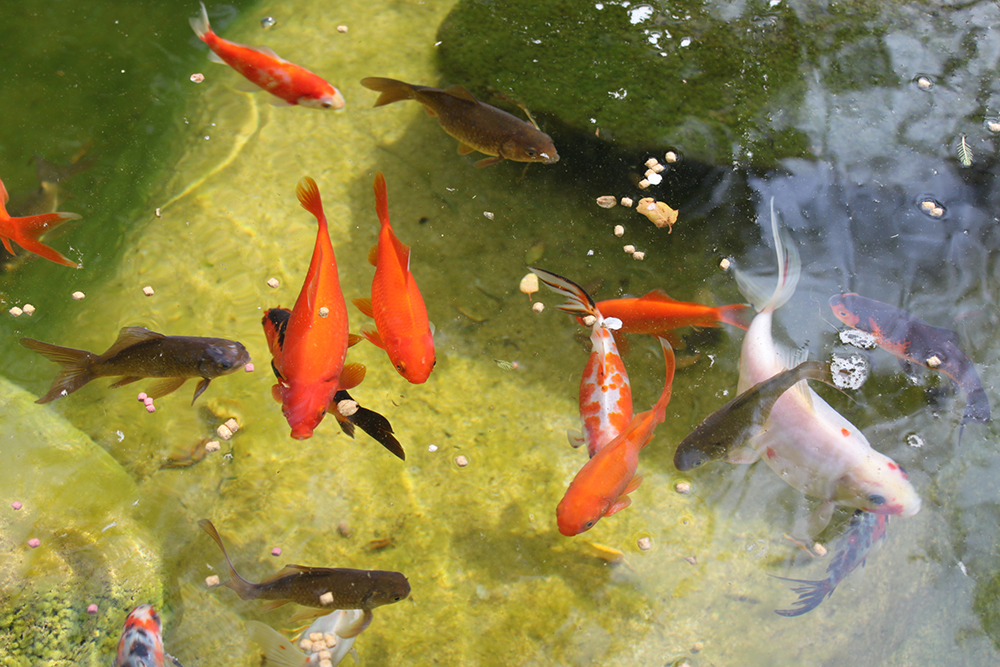
1. Maintain a healthy balance of fish in your pond:
You should have around 2cm of fish for every 25L of water in your pond. So for a 100L pond you should have around 8cm of fish, otherwise, your pond is likely over-populated. An over-populated pond will have excessive fish waste that may cause an imbalance in the pond water and the build up of nutrients and toxins ,such as ammonia. If you have an over-populated pond consider finding a new home for some of the fish.
2. Don’t Over-Feed your Fish:
When you feed fish more than they can eat, the uneaten food is left to decay in the pond. Be careful not to feed your fish more than once per day, and no more than they can eat in 2 to 3 minutes. Remove all excess, leftover fish food after 2 to 3 minutes. Its also ok not to feed fish for several days or in some cases not at all. If unsure how much to feed your fish, feeding instructions will be on your specific food label.
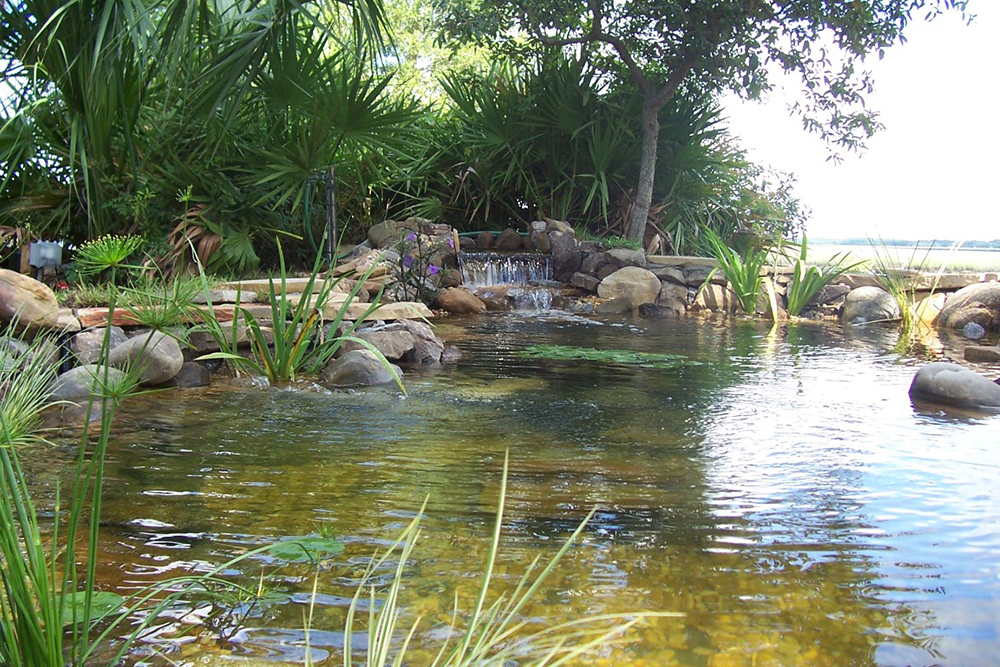
3. Maintain a healthy balance of Aquatic Plants:
Aquatic plants in ponds absorb nutrients from the water which reduce the nutrients available for algae to consume. Aquatic plants also help to keep your water clean, balanced and oxygenated. You should plan for your aquatic plants coverage or shading to be no more than 35% of your water’s surface area. Too many aquatic plants can actually be a negative and cause oxygen deficiencies at night due to the reverse photosynthetic process, when the aquatic plants take in oxygen at night and give off carbon dioxide.
[SHOP AQUATIC BARLEY STRAW BALES ON CATCH]
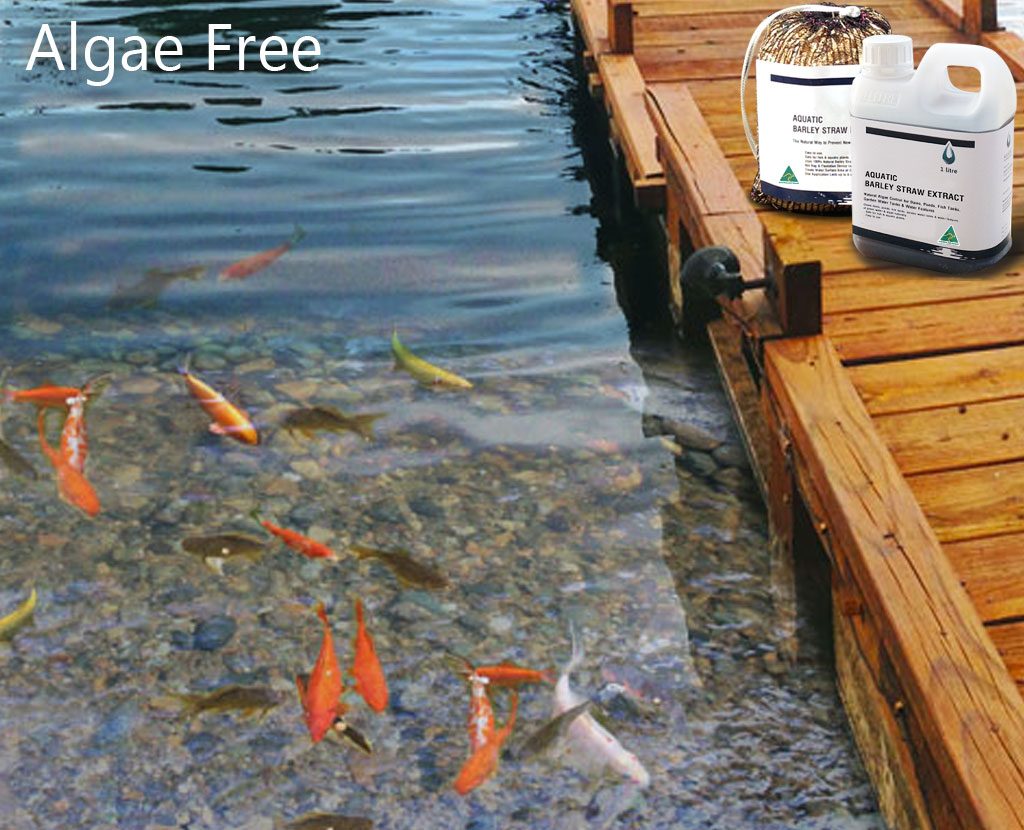
[SHOP AQUATIC BARLEY STRAW EXTRACT ON CATCH]
4. Add Natural Barley Straw Extract and Barley Straw Bales to suppress algae growth:
Adding Barley Straw extract is the natural way to control algae and help balance and condition the water in ponds. Barley Straw products won’t harm fish or aquatic plants. Add around 15mils of Aquatic Barley Straw Extract for every 100L of pond water weekly. Its easy to apply, just measure and tip directly into the pond. For larger ponds use you can use Barley Straw Bales. A 100gm or 1kg Barley Straw Bales are available. A 100gm Barley Straw Bale will treat a pond up to 2sqms and a 1kg Barley Straw Bale will treat a pond up to 20sqms of water surface area. Barley Straw Bales are best placed in the center of the pond or close to any pump or filter.
5. Regularly Clean Debris and Replace pond water:
Decaying debris, such as leaf material, fish waste and leftover fish food, can cause high nutrient and ammonia levels in your pond. Clean out your pond regularly and replace 10 to 30% of the water every month to help remove toxins and to help keep it healthy and clean.
[SHOP AQUATIC BLUE ON CATCH NOW]
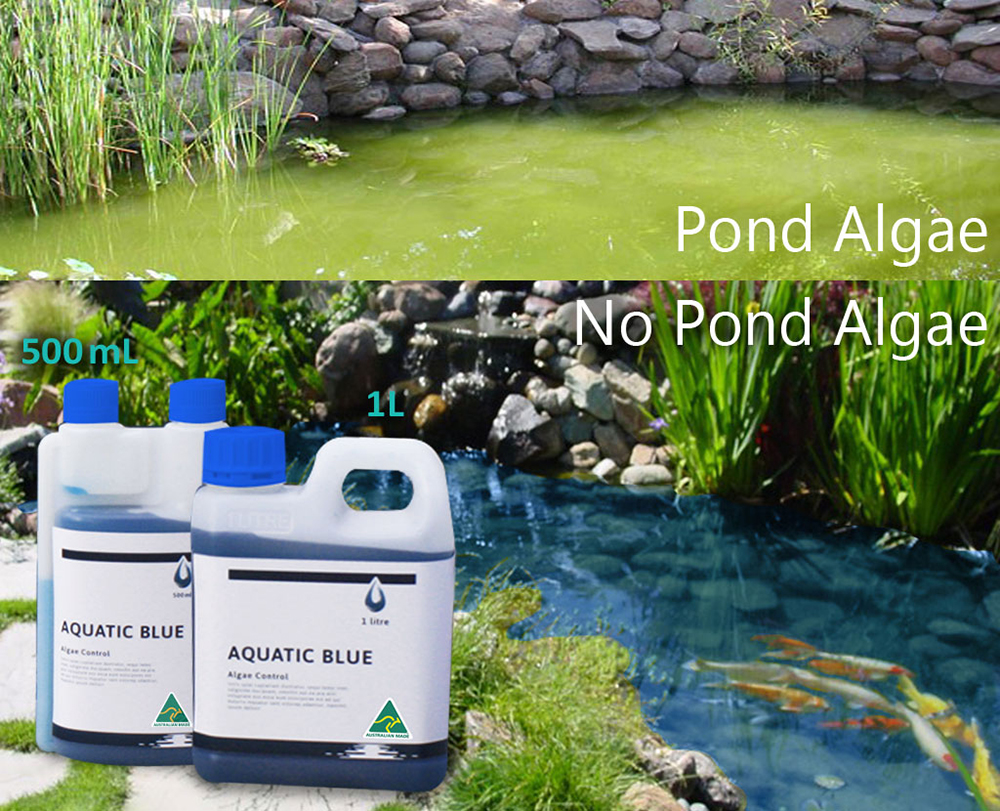
6. Colour the pond water to reduce sunlight, water temperature and improve the visual appeal:
Adding a pond dye, such as Aquatic Blue, will help reduce sunlight into the pond, this reduces the light available and helps keep the water temperature lower, thus helping reduce algae growth.
The addition of a pond dye also increases the visual appeal of the water providing a natural even coloring to the water that also improves the water reflectiveness.
Aquatic Blue is applied at around 2mL per 100L of water or more until you reach your desired colour.
7. Have the correct size pump and filters for your pond:
All ponds with fish should have a pump and filter. The pump should be able to turn over the volume of your pond water at least once every hour. So, if you have a 500L pond, you need a pump that pumps 500L per hour. Filter sizes are also based on volume of water, so it’s critical that your filter is matched to the volume of your pond. Also remember with biological filters to clean them several times a year. When cleaning filters always clean them in water from the pond in a bucket, as cleaning them with tap water can kill the natural beneficial bacteria within the filter. All reputable pumps and filter will clearly state the volumes.